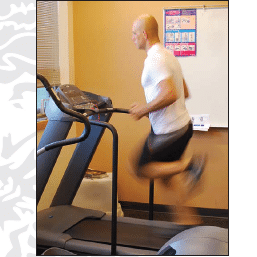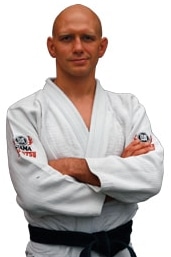
Cardiovascular training can be a confusing topic and there are many different and divergent views on the subject. Different reputable sources inform us that you don’t need to do cardio – just spar really long rounds (for grappling), or that you should spar twice as many rounds as you are going to fight (boxing), or that you should do sprints, or do long runs, or lift weights for muscular endurance, etc.
With so many ‘experts’, it is no wonder that the answer isn’t cut and dried…
Table of Contents
Why Cardio?
I have my own beliefs and they seem to work fairly well for me. I noticed a couple of years ago that my techniques worked best and my sparring was sharpest not when I was stronger but rather when my ‘cardio’ was at its peak. Because I wasn’t getting winded in sparring, I was able to think and make coherent plans throughout the match. At the time I was running 3 or 4 times a week, for 20 to 50 minutes at a time, in preparation for the fire department entrance test.
The more research I have done on running, the more I have come to realize that there are different levels of intensity for cardio and that it is important to spend quality time in most of them. It is probably true that one could substitute wrestling, uchikomi, kicking the bag/pads, or sparring for ‘traditional’ exercises, and that they would develop more sport-specific skills.
I do a lot of running, biking,stairmastering or stair running (i.e. solo conditioning), however, because of 4 reasons:
- I can do them without a partner
- I enjoy them (especially running and biking)
- It is easier to stay in the exact zone that you want to be in
- My chance of injury may be smaller.
Based on any number of good running books (of which Daniel’s Running Formula by Jack Daniel’s is an example) I have decided that, for myself, to do different types of cardio and, to some extent, periodize my cardio. Most authors recognize 3 or 4 types of aerobic and anaerobic training:
1 – ‘Easy and Long’ or ‘LSD’ (Long Slow Distance) or ‘Aerobic conditioning’ or ‘overdistance’
This level is characterized by by going for at least 45 min at 60 to 70% of max heart rate. Depending on my goals at the time, I try to do this sort of training once or twice a week, either riding a bike, running or by climbing Grouse Mountain (the locally popular ‘Grouse Grind’). I try to go at a pace where I could talk if I had to, but not carry on a conversation. This, for me, translates to keeping my heart rate between 140 and 150.
Some people argue that this type of training is that it is too long, given that a typical match or round is only 5 minutes long. I disagree for a number of reasons. First, one is going to be nervous long before the fight starts, and working for this long acclimatizes the body endure protracted stress. Another reason for going this long is to prepare your base for the more strenuous training to follow. You’ve got to jog before you can sprint. There are also many physiological adaptations that are best stimulated by LSD type training. Finally this sort of training is excellent for weight control and minimizing body fat.
Another way of thinking about it is asking why runners who specialize in 5 km runs (roughly equivalent to a grappling match) never just train distances of 5 km or less. They ALWAYS run longer distances as well, often up to 10 or 15 km.
2 – “Threshold” or “Tempo Runs” or “Anaerobic conditioning
This type of cardio is shorter and harder than type 1 conditioning. Here you are looking at c. 20 minutes (e.g. 15 to 30 min) with your heart rate about 90% of maximum. This type of training conditions your anaerobic systems and helps prepare them for really short interval training which you might do later. I often jump onto a rolling hills stairmaster program for this type of training, so my heart rate is usually at c. 85 to 90% for a good portion of the 20 minute program.
Right now I am doing at least two sessions of type 2 cardio in an 8 day cycle.
I’ve heard that Frank Shamrock’s routine consists of a warm up for 5 to 10 minutes, after which he keeps his heart rate at 170 for 20 minutes). This is an example of type 2 cardio or anaerobic conditioning. I would really like to know what Frank’s maximum heart rate is: if I had to guess it is probably about 197 to 200 bpm. If his HR is much lower (e.g. 180) then keeping it at 170 for that long would be an awesome achievement.
HR-based training has a lot of potential pitfalls, not the least of which is that max HR of 220 minus age can be off by 20 or 30 beats per minute. For HR based training one really has to do a maximal effort test (e.g. 4 laps of a 400 m track with ever-increasing intensity) to determine what your personal (as opposed to estimated) max HR is.
3 – Sprint Training
Many hard-core runners divide ‘Sprint Training’ into two or more categories. Typically they differentiate between: A) ‘Interval Training’ or ‘Aerobic Capacity’ training, and B) ‘Repetition Training’ or ‘Anaerobic Capacity’ training. The differences between the two categories of training lie in the work-to-recovery time ratios and the intensity of that work. Typically in ‘Category A’ (Interval) training you go for slightly longer intervals with less recovery time, whereas in ‘Category B’ (Repetition) training you go shorter and faster, but with quite long recovery periods.
My sense is that, for 99% of all competitive grapplers and martial artists, that the differentiation between Interval and Repetition training is academic. Basically in Sprint training you are trying to go very hard (95% to 100% of max heart rate) for not very long (20 seconds to 2 minutes), recover for a relatively short interval, and then go again. Obviously the harder one goes and the less rest you have, the more your performance at the sprints themselves will deteriorate over time (and that is OK).
The goal of Sprint training is to condition you body to function at close to maximum effort while in a severe oxygen deficit. It will also help develop your system’s ability to process and remove lactic acid from your muscles.
Some typical sprint workouts might include:
- G
 o to a track and run a 400m lap at 90% intensity. Say this takes you 1 1/2 minutes. Now rest 1 1/2 minutes and go again; try to keep the same time for your sprint (now it might take 91% intensity). Repeat 8 times
o to a track and run a 400m lap at 90% intensity. Say this takes you 1 1/2 minutes. Now rest 1 1/2 minutes and go again; try to keep the same time for your sprint (now it might take 91% intensity). Repeat 8 times - Do a 20 minute run: alternate between 1 minute jogging at an easy pace and 1 minute of running very fast
- Do so-called ‘Tabata Intervals’ where you do an activity for 20 seconds on, 10 seconds off, for 6 to 8 reps. For the sake of argument, assume you are using a rowing machine. Warm-up first, then start the sprints. Go completely berserk for 20 seconds (100% effort) then rest for 10 seconds, go completely berserk for another 20 seconds, etc. If you do these properly, you will find the pain from lactic acid quite extraordinary by the 5th or 6th rep.
I think a common mistake is to add sprint training too early in your training cycle. It is very important to get in sufficient training at lower speeds and intensities (Long Slow Distance) before you jump it up all the way to sprint training. If you start with sprint training injury is much more likely, because your bones, muscles and connective tissue might not be sufficiently conditioned to handle the stress.
Training Cycles, Periodization and Overtraining.
I have written a small book on the subject of periodization and overtraining (Perfect Peaking 1 and Perfect Peaking 2), so all I’m going to do here is to summarize the most salient points. The question is how to organize your training to avoid overtraining, injury and to ensure peaking at the right time. This is another very complicated subject, with many experts weighing in from the running literature, bodybuilding literature, etc.
Periodization uses phases of training, in which you vary exercise parameters (workout length, intensity, recovery, etc.) to achieved maximum results. Although periodization can be applied to any trainable physical attribute, it is most often associated with weightlifting, especially to help a lifter achieve a huge 1 rep maximum on competition day.
I have mixed feelings as to whether a standard weightlifting periodization plan is appropriate for grappling. Traditional weightlifting periodization is designed to maximize your 1 rep max, whereas for grappling you want to optimize your muscular endurance and anaerobic endurance. In most competitions you may be fighting for 5 to 20 minutes, possibly several times in a day.
The general principle of gradually increasing intensity and decreasing length of training session as you get closer to competition day is probably appropriate for martial arts cardio training.
Basically you might start out doing a lot of level 1 (LSD) training, maybe with a bit of level 2 thrown in for fun. Gradually you increase the intensity of your training, substituting more and more anaerobic work for the aerobic work. Even in the final stages, however, you still want to be doing at least one level 1 (LSD) session each week to maintain your aerobic conditioning.
Reducing Volume of Training as Training Intensity Increases.
One of the most common pitfalls that the avid and eager trainee can fall into is to keep adding on additional exercises and training sessions as he approaches competition time. As you increase the intensity of what you are doing (i.e. sprint training) you need to cut back on other activities to avoid injury and overtraining.
Your total time spent conditioning each week decreases as your sessions get more intense. Of course in the last week before the competition you should do very little in the way of conditioning, maybe just one relatively short LSD session and one relatively easy sprint session.
Speaking of endurance, my fingers are tired. Hope all goes well in your training
Stephan
Related articles on this site include:


